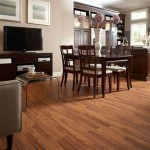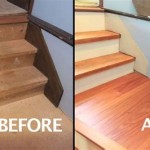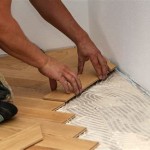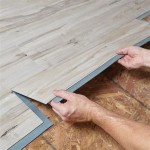Best Wood Flooring Choices for Homes with Dogs
Selecting the right flooring is a crucial decision for any homeowner, especially those sharing their space with canine companions. Dogs can present unique challenges to floors, including scratches from their nails, potential staining from accidents, and general wear and tear from their activity. Choosing a durable and aesthetically pleasing wood flooring option requires careful consideration of various factors, including hardness, finish, and overall maintenance requirements.
The ideal wood flooring for dog owners prioritizes resilience against the common issues that arise from pet ownership. This means opting for materials that can withstand scratches, resist moisture, and are easy to clean. The goal is to find a balance between practicality and the desired aesthetic appeal of wood flooring, ensuring a beautiful and functional home environment for both humans and their furry friends.
Hardness and Durability: Understanding the Janka Rating
The Janka hardness test measures the resistance of a wood sample to indentation. A higher Janka rating indicates a harder wood species, making it more resistant to scratches and dents. This is a key factor to consider when choosing wood flooring for homes with dogs, as their nails can easily scratch softer wood surfaces. While no wood is completely scratch-proof, harder woods will generally show less wear and tear over time.
Several wood species are known for their high Janka ratings and durability. Brazilian Walnut (Ipe) tops the list, boasting an exceptionally high Janka rating, making it incredibly resistant to scratches and dents. Hickory is another excellent choice, providing a balance of hardness and affordability. Maple is also a popular option, though somewhat softer than hickory, it still offers good resistance to wear and tear. Oak, particularly red oak and white oak, is a commonly used and relatively durable option, also often more economical than some of the harder exotic woods.
Conversely, softer woods like Cherry, Walnut, and Pine are generally not recommended for homes with dogs. While these woods offer a beautiful aesthetic, they are more susceptible to scratches and dents, which can quickly detract from their appearance. The long-term maintenance and potential for refinishing these softer woods more frequently should be carefully weighed against their aesthetic appeal.
It is important to note that the Janka rating is not the only factor to consider, but it serves as a valuable guide in determining the relative hardness and durability of different wood species. Other factors, such as the finish applied to the wood and the frequency of maintenance, also play a significant role in the overall longevity and appearance of the flooring.
Selecting the Right Finish: Protection Against Scratches and Moisture
The finish applied to wood flooring plays a crucial role in protecting the wood from scratches, moisture, and staining. A durable finish can significantly extend the lifespan of the flooring and maintain its appearance despite the wear and tear caused by dogs. Different types of finishes offer varying levels of protection and require different maintenance routines.
Polyurethane finishes are a popular choice for their durability and resistance to scratches and moisture. Water-based polyurethane finishes are generally more environmentally friendly and offer good protection, while oil-based polyurethane finishes tend to be more durable and provide a richer, warmer tone to the wood. However, oil-based polyurethane finishes often have a stronger odor during application and drying time.
Aluminum oxide finishes are known for their exceptional durability and scratch resistance. This type of finish is often found on prefinished wood flooring and provides a very hard, protective layer. While highly resistant to scratches, aluminum oxide finishes can be difficult to repair if damaged, requiring replacement of the affected boards rather than spot repairs.
Penetrating oil finishes, such as tung oil or linseed oil, penetrate the wood fibers and provide a natural, matte appearance. While these finishes offer good protection against moisture, they are less resistant to scratches than polyurethane or aluminum oxide finishes and require more frequent maintenance, such as occasional re-oiling, to maintain their protective properties.
Regardless of the finish chosen, it is essential to apply multiple coats to ensure adequate protection. Regularly cleaning and maintaining the finish according to the manufacturer's instructions will also help extend its lifespan and preserve the appearance of the wood flooring. Using floor mats in high-traffic areas and trimming dogs' nails regularly can also minimize scratches and wear.
Engineered Wood vs. Solid Wood: Understanding Construction Differences
When considering wood flooring, it's crucial to understand the difference between solid wood and engineered wood. Solid wood planks are made from a single piece of wood, while engineered wood planks are constructed from multiple layers of wood veneer bonded together. This construction difference affects the flooring's stability, moisture resistance, and overall suitability for homes with dogs.
Solid wood flooring offers a classic aesthetic and can be refinished multiple times, extending its lifespan. However, solid wood is susceptible to expansion and contraction with changes in humidity, which can lead to warping, cracking, or gapping. This makes solid wood less suitable for areas with high moisture levels, such as basements or bathrooms, and can be problematic in climates with significant seasonal humidity fluctuations.
Engineered wood flooring offers greater stability and moisture resistance compared to solid wood. The multi-layered construction of engineered wood minimizes expansion and contraction, making it a more suitable option for areas with fluctuating humidity levels. Engineered wood can also be installed over concrete slabs, making it a versatile choice for various subfloor types. However, the number of times that engineered wood can be refinished depends on the thickness of the top veneer layer.
For homes with dogs, engineered wood flooring can be a practical choice due to its stability and moisture resistance. While the top veneer layer may still be susceptible to scratches, the overall durability and ease of maintenance make it a viable option. Choosing an engineered wood with a thicker veneer layer allows for more refinishing opportunities, further extending the lifespan of the flooring. Consider the core construction of the engineered wood as well. A plywood core tends to be more stable than a fiberboard core.
Ultimately, the choice between solid wood and engineered wood depends on the specific needs of the homeowner, the environmental conditions of the home, and the aesthetic preferences. Carefully weighing the pros and cons of each option is crucial for making an informed decision that will result in a durable and beautiful flooring solution for both humans and their canine companions.

The 10 Best Types Of Wood Flooring For Dogs Floorings

How To Choose The Best Flooring For Dogs Home Depot

Best Flooring For Dogs Things To Keep In Mind Hardwood Bargains Blog Www Hardwoodbargains Com When Choosing New

How To Choose The Best Flooring For Dogs Home Depot
.png?strip=all)
What S The Best Dog Friendly Flooring America

How To Choose The Best Flooring For Dogs Home Depot

Best Hardwood Floors For Pets Bargains Blog Www Hardwoodbargains Com

How To Choose The Best Flooring For Dogs Home Depot

Pros And Cons Of Flooring Types For Dogs Floors Paws

Choosing The Best Hardwood Floors For Dogs And Cats Carlisle Wide Plank
Related Posts








